Second Gen Camaro – The American GT
While it didn’t sell quite as much as the Mustang, the first generation Camaro was an astounding success.
With over 840,000 produced units in three years, the Camaro became a founding pillar of the pony and muscle car market, securing Chevrolet’s place until they produced the car they really wanted.
However, it’s success was almost an accident. GM hurried to produce a competitor for the Mustang and scraped together a pony car with whatever parts it could adapt – mainly chassis and suspension components from the Nova.
Of course, the design was prodigious – fully tailored to the taste of the growing market of young American drivers.

Come 1970, Chevrolet unveiled the second generation Camaro – a new clean take on the performance coupe. It was so different from the original, many people on the street couldn’t tell what car it was and whether it was American at all.
1970 Chevrolet Camaro – The American GT Coupe
A look towards Europe’s GT cars of the mid-60s, especially the Italian ones, and the inspiration for becomes obvious. We can see design cues from the Ferrari 250 GT Berlinetta Lusso front and back in the second gen Camaro.

Gun-barrel fenders housing the headlights. Curvy and elegant front end with smooth and continuous surfaces travelling along the long hood and a marvelously sloping roofline.
At the same time there’s tension and aggression in the body. You don’t immediately see it in the Camaro, because the bumper cuts the front end in half. However, opt for the Rally Sport package, and an entirely new front end reveals itself.
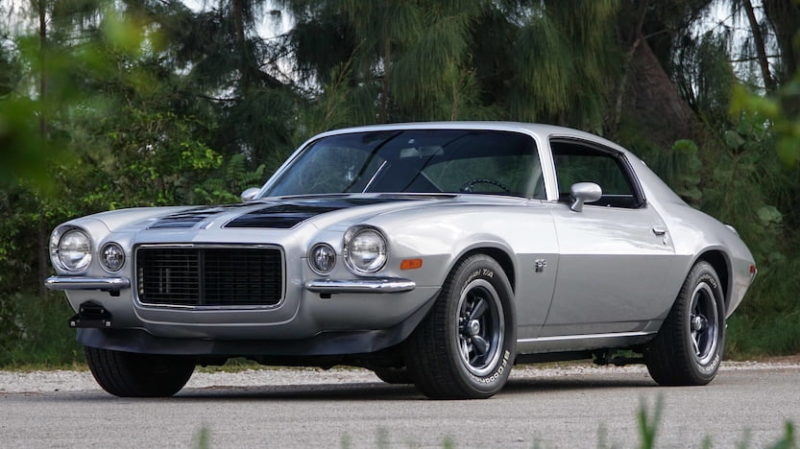
A massive V-shaped grille, grinning between two small bumperettes on either side. The parking lights are relocated on the inside of the headlights, introducing consistency and symmetry in the front end.
Looking at the side, the Camaro is unmistakably American, featuring the perfect pony car silhouette – long hood, fastback roof, short deck, delicate hump on the rear fender.
The roof slopes gently into the trunk and converges with the massive quarter panels via thick C-pillars. The fenders wrap underneath the car to expose the tires and produce a streamlined shape.

All lines and curves converge at the chopped off rear end. Decorated with quad tail lights and a sharp ducktail spoiler, the rear of the car is tight and functional.
The Camaro looks muscular and aggressive, but also tasteful and surprisingly pleasing to the eye. It’s a remarkably beautiful car – especially with the RS package.
You could tell it is a driver’s car before you even put the key in the ignition. The wraparound instrument cluster puts all gauges and controls in your field of view and within easy reach, so you don’t have to take your eyes off the road.
Of course, Gen II Camaro is mechanically superior
The second generation F-body was specifically designed for the Camaro and Firebird. The cars kept the same basic layout and wheelbase, but grew slightly longer and wider and sat lower than their predecessors.
The front suspension uses a double A-arm and coil spring construction, while the rear has the traditional live axle and leaf spring suspension.

With all these similarities in mind, the second gen offered a ride like no previous Camaro could. GM engineers learned a lot in the lifetime of the first F-body, both in street and race settings. They refined the chassis and suspension, offering superior balance, handling and ride quality.
There’s less roll in the corners and very predictable handling on the street. The latter comes courtesy of a new steering linkage, located in front of the steering axis. It increases the compliance of the wheel as the car goes into a corner, creating an understeering characteristic.
The Camaro follows tightly the curvature of the road, responds well to sudden jerks of the wheel and maintains good stability in a straight line.
The caveat comes at the price of high speed performance. Pick up too much speed before the corner and you’ll witness the front end pushing through in a straight line, despite the rear-wheel-drive layout.
At least you can go hard on the brakes. Front disc brakes come standard on every model.
With that said, the second generation Camaro is a much more refined vehicle in comparison to the original. The cabin offers a far more comfortable ride. It’s well insulated from the harshness of the road and the deafening roar of the engine.
The 1970 Chevrolet Camaro started out strong
Early during the development stage, internal literature suggested the 1970 Camaro could be ordered with Chevrolet’s massive 454 cubic-inch V8 engine. The engine bay sure was big enough to accept it, but the times changed and the LS6 never made it into a production version.

The most powerful version was the Camaro SS 396 L78 big block V8, which was bored out to 402 cubic inches. Topped with a 780 CFM Holley 4-barrel carburetor, the engine churned out 375 horsepower and 415 lb-ft of torque. Chevrolet chose to keep the old badge for consistency.
The race-ready Z/28 model received the 350 cu-in LT-1 V8 engine from the Corvette. LT-1 was rated at 360 hp and 380 lb-ft of torque – slightly less than the Corvette. However, it was built with the same high-performance internals and it was a matter of bolt-on parts to access its full potential.
Overall, the LT-1 was a superior engine to the 302 cu-in small block, which Camaros ran in the SCCA Trans-Am Series. Car and Driver ran a 14.2-second quarter mile at 100.3 mph in the 1970 Camaro Z/28, gaining more than half a second over the previous year model.
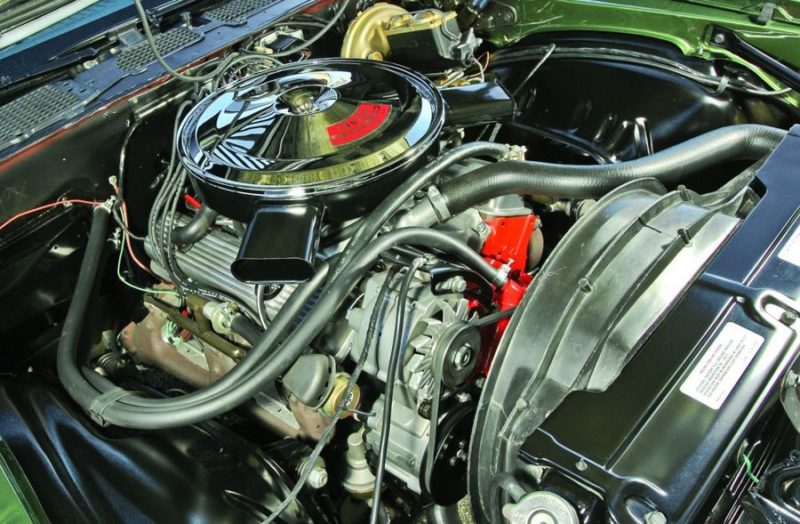
Unfortunately, this was as good as it gets for Camaros for a long time.
The Camaro never gained more power until the 80s
As the 70s progressed, automakers found themselves in the crossfire between a raging fuel crisis, rising insurance costs, and a barrage of pollution, fuel economy and safety legislation.
In 1971, all high-compression GM engines were tuned down to run on low-leaded and unleaded gasoline to meet the government’s charge of cleaning up lead emissions. The 396 big block lost 50 horsepower, and the LT-1 lost 30 hp.
In 1972, the switch from gross to net horsepower ratings caused numbers to drop across the board for all cars on the market. The actual horsepower – as installed into the vehicles – remained the same, but interest in performance cars dwindled and so did sales.
Due to massive factory strikes in 1971 and 1972, the Camaro’s production schedule was compromised and the car was almost axed. It was the sheer devotion of Camaro enthusiasts, among which some GM executives, that it remained in production.
The SS Camaro was killed after 1972, along with the SS396 and SS350 engines.

A new-for-1973 Type-LT model was introduced as a luxury touring package with nicer interior, better sound insulation and a suspension tuned for a softer ride.
If you wanted to, you could soup up your Camaro to the max, ordering the LT, RS and Z28 packages altogether in the same vehicle.
Of course, that didn’t counter the fact that performance was going down.
1974 – Exit performance, enter malaise
In 1974, the government enforced the 5 mph bumper regulation. Manufacturers had to adapt practically 100% of their passenger cars with improved impact absorbing bumpers.
This was, of course, unimaginably expensive, so to remedy the situation, Chevrolet slapped a pair of massive aluminum bars on each end of the Camaro, increasing its length by 7 inches.
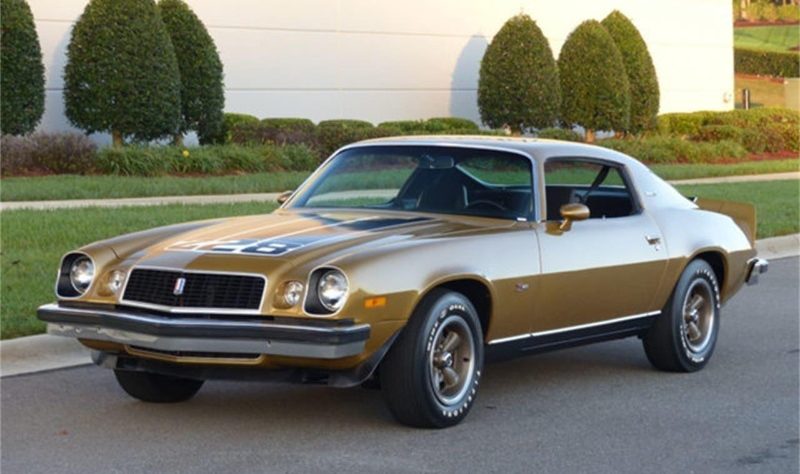
In an attempt to conceal the bumper, the designers came up with this slanted front end, which is frankly awful and takes away any elegance the car previously had. More of this rant here.
Interestingly, the 1974 Camaro actually achieved more than 50% increase in sales over the previous year with over 150,000 units produced. This includes almost 14,000 Z28 models which is the highest the second generation ever saw.
The truth is, other manufacturers were doing just as bad. While the Camaro lost it’s GT appeal and had its engine lineup neutered, it was still there.
Meanwhile, the Dodge Challenger and Plymouth Barracuda ended production in 1974 with the Road Runner following the next year. The Dodge Charger and Mercury Cougar got a second chance in life as personal luxury vehicles.
Every performance car that survived the chopping block received its own pair of hideous 5 mph bumpers.

The Pinto-based 1974 Mustang II was a monstrosity of its own, but times were such it actually ended up as Motor Trend’s Car of the Year.
The refreshed Camaro maintained its sales volume in 1975 even after introducing the catalytic converter and axing its last performance model – the Z28.
In 1977, the Camaro’s popularity peaked and for the first time in history it eclipsed the sales of the Mustang, creating a total of 218,853 units.
In 1978, Chevrolet introduced another design refresh, replacing the protruding bumpers with body-colored urethane pieces, which actually look like they belong to the car. The rear end got the full width light panel.
Heading towards the 80s, the Camaro began evolving into a more angular, almost futuristic-looking car.
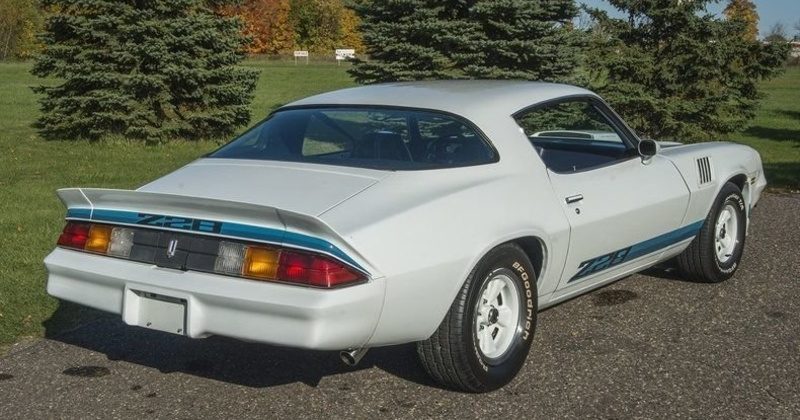
In 1979, Chevrolet replaced the Type LT package with the luxury Berlinetta model as a nod back to the Ferraris which inspired the original design. The same year, Camaro saw an all-time record in sales, reaching 282,571 units. This record still stands and, from the looks of it, will never be reached again.
The second generation powered through the darkest times for performance cars in America and lived all the way to 1981. It’s the longest running and arguably the most successful generation in Camaro history.

Recent Posts
-

Reegan Is Building This 1975 Dodge Ramcharger For One Lucky YouTube Subscriber
August 13, 2025Update 08/15/25: Reegan now has an all new aluminum radiator installed with dual electric fans. The Wilwood master cylinder is installed along with an EvansCNC…Read more -
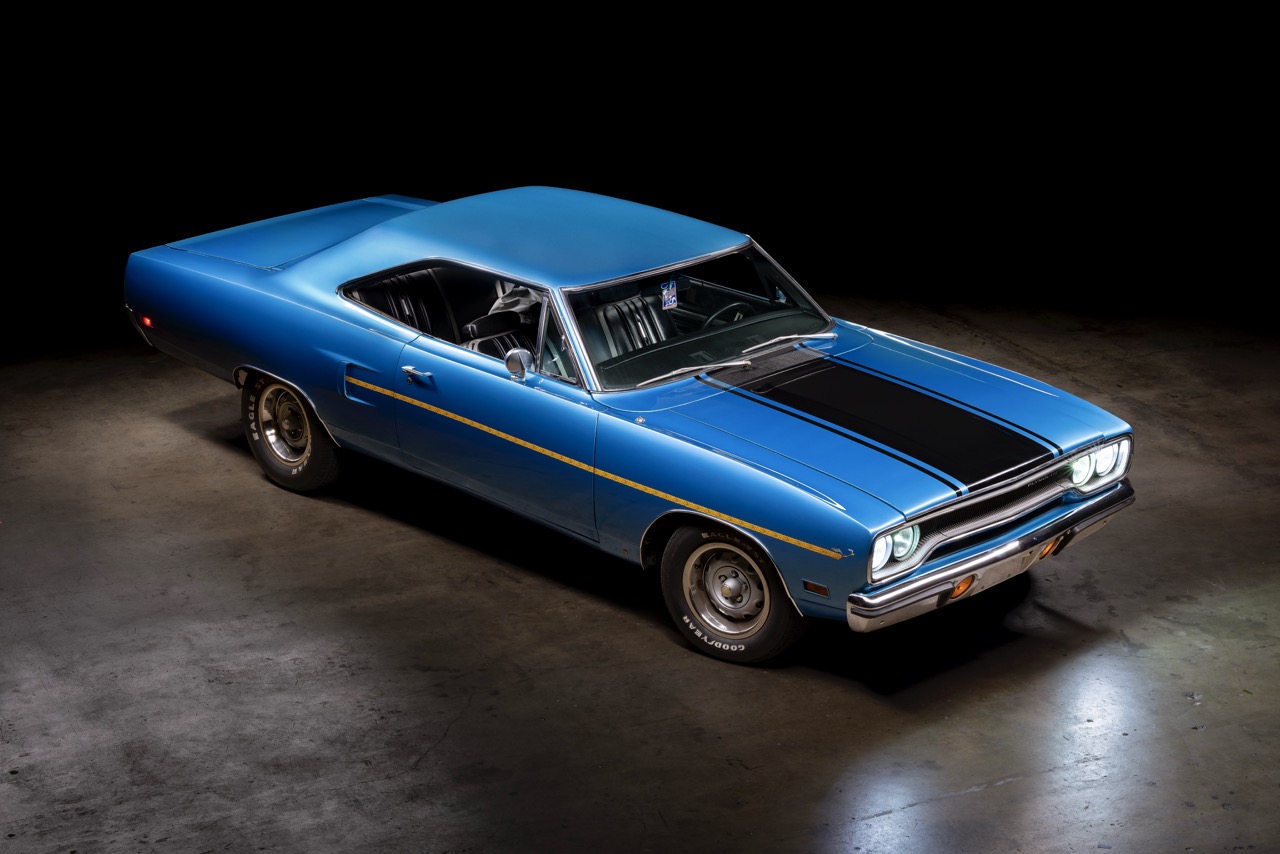
Let's Turn a 1970 Plymouth Roadrunner into RestoMods Royalty
August 8, 2025Update: 8/8/2025 A little over a year ago we purchased a beautiful 1970 Plymouth Roadrunner from a local collector car dealership Bayside Auto. We knew…Read more -

The Ultimate 1968 Dodge Charger HELLCAT Build
August 8, 2025Update 8/8/25: Back in January of 2024, we purchased a 1968 Charger shell from Mopars 5150. They specialize in all things Mopar and had a…Read more
Become a Car Club Member
Car Club Members Get Entries to Win, Discounts in our Shop, Discounts with our Preferred Partners and more!
Membership benefits
By joining the RestoMods Car Club Today, you will receive amazing perks plus 15 bonus entries into our sweepstakes for every month you are an active member
-
Auto Discounts:Curated Discounts From Your Favorite Parts Companies
-
Restomods Monthly:Monthly Magazine With The Latest Industry News
-
Classified Ads:Get Free Postings seen by 300,000 enthusiasts monthly
-
Car Show Tickets:Check out the biggest vintage car shows on us.
-
Exclusive Car Deals:First chance to purchase any prize cars not selected






Restomods on Instagram
Follow us on Instagram and other networks












